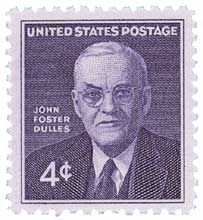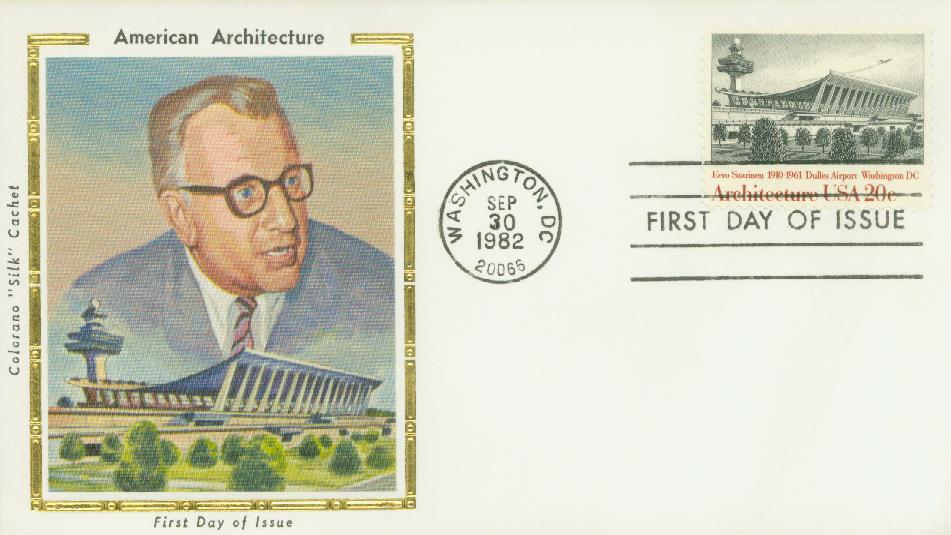
# 2022 - 1982 20c American Architecture: Dulles Airport
20¢ Dulles Airport
American Architecture
City: Washington, DC
Quantity: 41,335,000
Printed By: Bureau of Engraving and Printing
Printing Method: Engraved
Perforations: 11
Color: Black and brown
Birth Of John Foster Dulles
The oldest of five children, Dulles attended school in Watertown, New York before entering Princeton University. There he served on the debate team before graduating in 1908. Dulles went on to attend George Washington University Law School.
After graduating and passing the bar exam, Dulles worked in a New York City law firm where he focused on international law. Then in 1915, his uncle Robert Lansing, then Secretary of State, asked him to visit Nicaragua, Costa Rica and Panama to see if they would aid the U.S. in the war against Germany. Dulles helped work out a deal between the nations that served all parties.
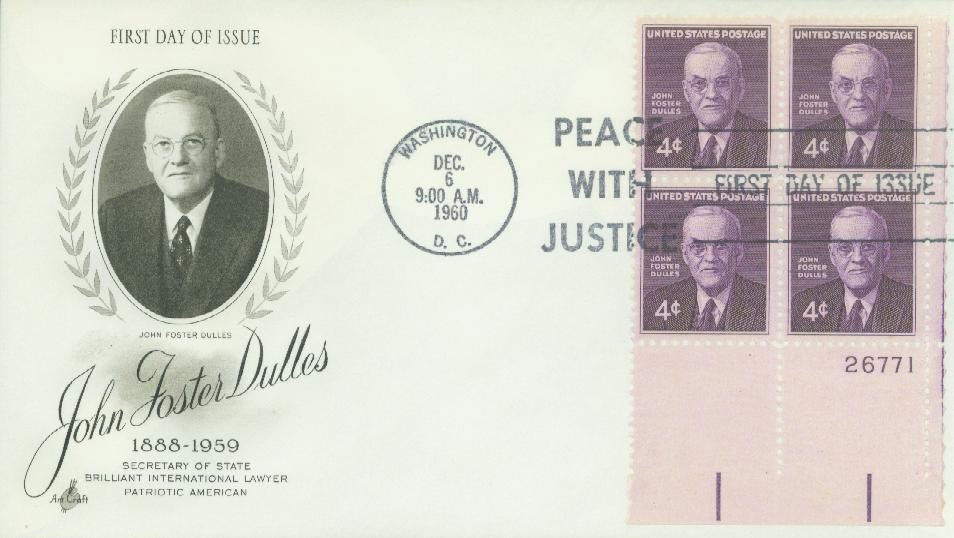
Also during World War I, Dulles attempted to join the Army, but was denied because of his poor eyesight. However, he was granted a commission as a Major on the War Industries Board. When the war was over, President Woodrow Wilson made Dulles legal counsel to the U.S. delegation at the Versailles Peace Conference. While there, Dulles was a vocal opponent of harsh reparations against Germany. After the conference, he served on the War Reparations committee and the League of Free Nations Association, which supported America’s membership in the League of Nations.
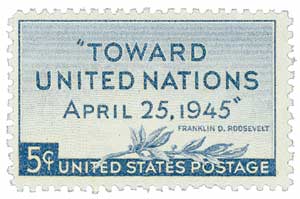
Dulles went on to help create the Dawes Plan, which dealt with the payment of war reparations. However, Germany stopped making some of its payments in 1931 and by 1935, Dulles had to sever all business ties with the nation that had been taken over by the Nazis.
In the 1940s, Dulles supported Thomas E. Dewey’s bids for the presidency and served as his chief foreign policy advisor. After World War II, he attended the San Francisco Conference and helped to write the preamble to the United Nations Charter. Dulles then served as a delegate to the U.N. General Assembly in 1946, 1947, and 1950.
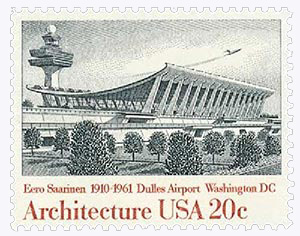
In January 1953, President Dwight D. Eisenhower made Dulles Secretary of State. In that position, he spent much of his time building up NATO and was an important figure during the early Cold War era, fighting communism worldwide. Dulles supported the French war against the Viet Minh in Indochina and played a crucial role in the CIA’s overthrow of Iran’s Mossadegh government in 1953.
The following year, Dulles helped found the Southeast Asia Treaty Organization (SEATO), to prevent the expansion of communism in Southeast Asia. Dulles also helped found the National Council of Churches, the Foreign Policy Association and the Council of Foreign Relations. And he served on the boards of the Carnegie Endowment for International Peace and the Rockefeller Foundation. For his accomplishments, Dulles was made Time’s Man of the Year for 1954.
20¢ Dulles Airport
American Architecture
City: Washington, DC
Quantity: 41,335,000
Printed By: Bureau of Engraving and Printing
Printing Method: Engraved
Perforations: 11
Color: Black and brown
Birth Of John Foster Dulles
The oldest of five children, Dulles attended school in Watertown, New York before entering Princeton University. There he served on the debate team before graduating in 1908. Dulles went on to attend George Washington University Law School.
After graduating and passing the bar exam, Dulles worked in a New York City law firm where he focused on international law. Then in 1915, his uncle Robert Lansing, then Secretary of State, asked him to visit Nicaragua, Costa Rica and Panama to see if they would aid the U.S. in the war against Germany. Dulles helped work out a deal between the nations that served all parties.

Also during World War I, Dulles attempted to join the Army, but was denied because of his poor eyesight. However, he was granted a commission as a Major on the War Industries Board. When the war was over, President Woodrow Wilson made Dulles legal counsel to the U.S. delegation at the Versailles Peace Conference. While there, Dulles was a vocal opponent of harsh reparations against Germany. After the conference, he served on the War Reparations committee and the League of Free Nations Association, which supported America’s membership in the League of Nations.

Dulles went on to help create the Dawes Plan, which dealt with the payment of war reparations. However, Germany stopped making some of its payments in 1931 and by 1935, Dulles had to sever all business ties with the nation that had been taken over by the Nazis.
In the 1940s, Dulles supported Thomas E. Dewey’s bids for the presidency and served as his chief foreign policy advisor. After World War II, he attended the San Francisco Conference and helped to write the preamble to the United Nations Charter. Dulles then served as a delegate to the U.N. General Assembly in 1946, 1947, and 1950.

In January 1953, President Dwight D. Eisenhower made Dulles Secretary of State. In that position, he spent much of his time building up NATO and was an important figure during the early Cold War era, fighting communism worldwide. Dulles supported the French war against the Viet Minh in Indochina and played a crucial role in the CIA’s overthrow of Iran’s Mossadegh government in 1953.
The following year, Dulles helped found the Southeast Asia Treaty Organization (SEATO), to prevent the expansion of communism in Southeast Asia. Dulles also helped found the National Council of Churches, the Foreign Policy Association and the Council of Foreign Relations. And he served on the boards of the Carnegie Endowment for International Peace and the Rockefeller Foundation. For his accomplishments, Dulles was made Time’s Man of the Year for 1954.








